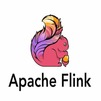
Elevate your Snowflake expertise with our Advanced Data Engineering course. This training delves deep into sophisticated topics such as performance optimization, real-time data processing, and advanced security measures. Participants will learn to configure and manage large-scale data transfers, implement data governance, and utilize Snowflake’s advanced features like Materialized Views and Secure Data Sharing. Perfect for experienced data engineers aiming to refine their skills and lead complex Snowflake projects in their organizations.
Snowflake Data Engineer Interview Questions - For Intermediate
1. What is multi-factor authentication in Snowflake, and why is it important?
Multi-factor authentication (MFA) in Snowflake enhances security by requiring users to provide two or more verification factors to access their accounts. This is important to protect sensitive data and access to the data warehouse from unauthorized users.
2. How can you optimize a query in Snowflake?
To optimize queries in Snowflake, you can use clustering keys to organize data efficiently, leverage the various caches, and size your virtual warehouses appropriately based on the workload. Additionally, using partitions and choosing optimal file sizes for data loading can also improve performance.
3. Describe the process of data loading into Snowflake.
Data loading in Snowflake involves stages where data files are stored temporarily. Using COPY commands, data is loaded from these stages into Snowflake tables. For continuous loading, Snowpipe can be utilized to automate the ingestion of data as it arrives.
4. What is the significance of roles in Snowflake?
Roles in Snowflake define the level of access and permissions that users have. They are crucial for managing security and ensuring that users have appropriate access to perform their tasks without compromising the security or integrity of the data.
5. How does partitioning work in Snowflake?
While Snowflake does not use traditional partitioning, it allows micro-partitions that are automatically managed. These micro-partitions store table data in compressed, columnar format, which is optimized for efficient querying and data management.
6. Can Snowflake handle unstructured data?
Yes, Snowflake can manage unstructured data by storing it in semi-structured data formats like JSON, AVRO, or XML. Users can directly query this data using SQL with Snowflake’s VARIANT data type.
7. What are Tasks in Snowflake?
Tasks in Snowflake are scheduled operations defined by SQL statements that can perform repetitive actions like loading data or executing stored procedures at specified intervals.
8. How do you manage large data transfers in Snowflake?
For large data transfers, Snowflake supports multi-part uploads to cloud storage stages and then uses COPY commands to load data efficiently into the database. Using features like Snowpipe, data can also be ingested continuously as it arrives.
9. What are Sequences in Snowflake?
Sequences in Snowflake are database objects used to generate unique, incremental numbers. They are often used to create unique identifiers for table rows without manual intervention.
10. How does Snowflake support data governance?
Snowflake supports data governance by providing features like data masking, row access policies, and extensive auditing capabilities, which help ensure that data is used appropriately and complies with regulations.
11. What is Materialized Views in Snowflake and how do they work?
Materialized views in Snowflake store the result of a query and can be refreshed periodically. They improve performance by providing a faster retrieval of data, as opposed to running the full SQL query each time.
12. How do you implement data deduplication in Snowflake?
Data deduplication in Snowflake can be implemented using the MERGE command, which allows you to update existing records and insert new ones without creating duplicates, thus maintaining data integrity.
13. Describe the auditing features in Snowflake.
Snowflake’s auditing features include detailed access logs, query history, and usage metrics. These tools help administrators monitor activities, assess performance, and ensure compliance with data usage policies.
14. How does Snowflake support BI tools?
Snowflake integrates seamlessly with many BI tools through native connectors, ODBC, JDBC, and other APIs, allowing for real-time data analysis and visualization directly from the data warehouse.
15. What is the impact of Snowflake’s architecture on data scalability?
Snowflake’s architecture significantly impacts data scalability by allowing storage and compute to scale independently. This enables organizations to adjust resources based on their needs without affecting performance or incurring unnecessary costs.
Snowflake Data Engineer Interview Questions - For Advanced
1. How do you ensure optimal performance when using Snowflake with BI tools?
To ensure optimal performance when using BI tools with Snowflake, it is crucial to utilize caching strategies, optimize query design, and appropriately size virtual warehouses. Pre-aggregating data, using materialized views, and minimizing the data transferred by filtering and aggregating as much as possible at the database level can significantly improve response times and reduce load times within BI tools.
2. What are the best practices for data lifecycle management in Snowflake?
Best practices for data lifecycle management in Snowflake include implementing data retention policies, using Time Travel and Fail-safe appropriately to manage historical data and backups, and archiving old data to more cost-effective storage solutions within Snowflake. Regularly reviewing and cleaning up unused objects and optimizing data storage formats and compression can also help manage data effectively throughout its lifecycle.
3. Can you explain the impact of Snowflake’s query optimization on resource usage?
Snowflake’s query optimization significantly impacts resource usage by ensuring that queries consume the least amount of compute resources necessary. Techniques like predicate pushdown, columnar storage scanning, and automatic micro-partitioning ensure that only the necessary data is processed. This optimization reduces the time and compute power required to execute queries, directly impacting cost and efficiency.
4. What techniques does Snowflake use to handle large-scale data transformations?
For large-scale data transformations, Snowflake leverages its robust SQL engine that can handle complex transformation logic. The use of virtual warehouses enables the distribution of transformation tasks across multiple compute nodes, facilitating parallel processing and significantly speeding up transformations. Snowflake also supports various ETL and ELT tools that integrate seamlessly for data transformation processes.
5. Discuss how Snowflake supports the use of artificial intelligence and machine learning workflows.
Snowflake supports AI and ML workflows through its ability to integrate with external ML frameworks and platforms via connectors like Snowpark. Additionally, Snowflake facilitates the storage and querying of large datasets, which are essential for training ML models. By allowing data scientists to use familiar SQL commands and other programming languages within Snowflake, it provides a seamless environment for developing and deploying machine learning models.
6. What are Snowflake’s features for predictive analytics?
Snowflake supports predictive analytics by allowing the integration of SQL with Python, Scala, and other languages through external functions and Snowpark. This integration enables users to run predictive analytics models directly within Snowflake, leveraging its data processing capabilities and eliminating the need to move data to separate analytics platforms.
7. How does Snowflake facilitate data sharing across different organizations?
Snowflake’s Secure Data Sharing feature allows organizations to share live data with other Snowflake users without copying or transferring the data. This capability is managed through Snowflake’s data exchange platforms, where producers can provide access to their data, and consumers can use this data directly in their own Snowflake environment, ensuring data remains secure and up-to-date.
8. Describe the process of setting up a secure and scalable data pipeline in Snowflake.
Setting up a secure and scalable data pipeline in Snowflake involves defining data sources, creating stages for data ingestion, and configuring Snowpipe for continuous data loading. For scalability, setting up multiple virtual warehouses to handle different stages of the data pipeline can help manage load effectively. Ensuring security involves implementing role-based access control, using encrypted connections, and setting up auditing and monitoring to track data access and pipeline performance.
9. What are the considerations for disaster recovery in Snowflake?
Considerations for disaster recovery in Snowflake include setting appropriate Time Travel and Fail-safe periods to recover data from accidental deletion or corruption. Additionally, ensuring data is replicated across multiple availability zones or regions can protect against data center failures. Regular testing of recovery procedures and maintaining documentation on recovery processes are also crucial for effective disaster recovery.
10. How do you handle version control of data models in Snowflake?
Handling version control of data models in Snowflake can be managed through integration with external version control systems like Git. Changes to data models are scripted as SQL files and managed through branches in a version control system, allowing changes to be reviewed, approved, and applied within Snowflake environments systematically.
11. Explain how dynamic data masking works in Snowflake.
Dynamic data masking in Snowflake allows masking policies to be applied directly to data columns without altering the actual data stored. These policies dynamically transform the data at query time based on user roles or conditions, ensuring sensitive information like credit card numbers or personal identifiers are obfuscated for unauthorized users while remaining accessible to authorized personnel.
12. Discuss the implementation of column-level security in Snowflake.
Column-level security in Snowflake is implemented through the use of roles and grants. Specific columns can be restricted by granting select permissions on individual columns to specific roles. This allows fine-grained access control and ensures that sensitive data is only accessible by users who have the necessary permissions, enhancing data security and compliance.
13. What is the role of JSON handling in Snowflake’s data integration capabilities?
JSON handling in Snowflake is pivotal for integrating semi-structured data. Snowflake’s native support for JSON allows users to store, query, and analyze JSON data directly using standard SQL without the need for pre-processing or transformation. This capability is essential for scenarios where data originates from varied sources such as IoT devices, web APIs, or mobile apps.
14. How does Snowflake manage network security for data in transit?
Snowflake ensures network security for data in transit by enforcing TLS (Transport Layer Security) encryption for all data exchanges between clients and the Snowflake service. This prevents unauthorized interception of data as it moves between networks and devices, ensuring that sensitive information remains protected during transmission.
15. What are the best practices for using Snowflake’s scripting and stored procedures for automation?
Best practices for using Snowflake’s scripting and stored procedures include encapsulating business logic into stored procedures for reuse and maintainability, scheduling tasks for automation of routine jobs, and leveraging transaction control within scripts for data integrity. Additionally, testing stored procedures in development environments before deployment and optimizing script performance by minimizing row-by-row processing are crucial for efficient automation.
Course Schedule
| Apr, 2025 | Weekdays | Mon-Fri | Enquire Now |
| Weekend | Sat-Sun | Enquire Now | |
| May, 2025 | Weekdays | Mon-Fri | Enquire Now |
| Weekend | Sat-Sun | Enquire Now |
Related Courses
Related Articles
- How do I earn the PRINCE2® Foundation & Practitioner Certification?
- How Customization Can Boost Your Company's Productivity and Efficiency in Microsoft Dynamics 365?
- Navigating the Complexities of ANSYS Software: A Detailed Review
- Mastering CANoe: Essential Training for Automotive Professionals
- Become a Microsoft Azure Administrator with AZ104 Online Training & Certification Course
Related Interview
- PingFederate Interview Questions Answers
- Business Process Framework (eTOM) Fundamentals Training Interview Questions Answers
- Salesforce Certified Business Analyst Training Interview Questions Answers
- DevOps & GitHub Foundations (AZ-2008) Core Principles Training Interview Questions Answers
- EMERSON DeltaV DCS Training Interview Questions Answers
Related FAQ's
- Instructor-led Live Online Interactive Training
- Project Based Customized Learning
- Fast Track Training Program
- Self-paced learning
- In one-on-one training, you have the flexibility to choose the days, timings, and duration according to your preferences.
- We create a personalized training calendar based on your chosen schedule.
- Complete Live Online Interactive Training of the Course
- After Training Recorded Videos
- Session-wise Learning Material and notes for lifetime
- Practical & Assignments exercises
- Global Course Completion Certificate
- 24x7 after Training Support


 (1).png)








 Join our Live Instructor-Led online classes delivered by industry experts
Join our Live Instructor-Led online classes delivered by industry experts